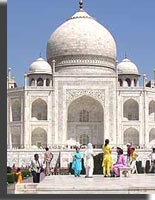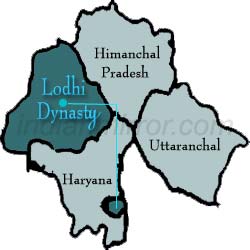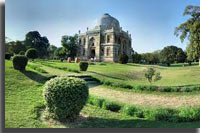History :

During his rule though there were numerous attempts to destabilize the empire, Buhlul managed to stand by the Lodhis. He captured a number of nearby states. This was the only Afghan dynasty to rule over the Delhi Sultanate, with the exception of Sher Shah Suri. Buhlul Khan seized the throne and managed the kingdom without much resistance from the then ruler, Alam Shah. Buhlul Khans territory was spread across Jaunpur, Gwalior & Uttar Pradesh. In 1486, he appointed his eldest son Barbak Shah as the Viceroy of Jaunpur.
Sikandar Lodi
Due to the death of Buhlul Lodhi in July 1489, his son Nizam Khan succeeded him, under the title Sikandar Shah. He turned out to be the most capable ruler of the Lodhi Dynasty. Sikandar Shah established a fair system of administration & founded the historical city of Agra. His empire extended from Punjab to Bihar and he also signed a treaty with the ruler of Bengal, Alauddin Hussain Shah.Sikandar Shah was the one who founded a new town where the modern day Agra stands and was known to be a kind and generous ruler who cared for his subjects.
Ibrahim Lodhi

As the time came for Ibrahim to ascend the throne of Lodhi Dynasty, the political structure in the Dynasty had dissolved due to abandoned trade routes and depleted the treasury.
The Deccan was a coastal trade route, but in the late 15th century the supply lines collapsed. The decline and failure of specific trade route resulted in cutting off supplies from the coast to the interior, where the Lodi Empire resided. The Dynasty was not in a position to protect itself from the warfare if it would break out on the trade route roads therefore, the trade routes where not utilised and thus their trade declined, so further did their treasury leaving them vulnerable to internal political problems.

Place |
Delhi, Punjab |
Period |
1451- 1526 |
Language |
Pashto and Persian |
Religion |
Sunni Islam |
Rulers |
Bahlul Lodi, Sikandar Lodi, Ibrahim Lodi
|
One more problem Ibrahim had when trying to ascend the throne as the next Lodi emperor was due to the Afghan chiefs. The chiefs did not like Sultan Ibrahim, so they divided the Lodi Empire and gave Ibrahim's older brother, Jalaluddin the area in the east at Jaunpur and gave Ibrahim the area in the west, Delhi. Despite this situation, Sultan Ibrahim being the military man, he gathered enough military support and killed his brother and reunited the kingdom by the end of that same year in 1517.
Later Ibrahim Lodhi arrested Afghan nobles who opposed him. The Afghan nobles were loyal to the Governor of Bihar, Dariya Khan as they wanted him to rule Delhi, not Sultan Ibrahim.
People who tried to take over the Lodi throne were extremely common during Sultan Ibrahim's time. Due to the lack of the law of succession, Ibrahim was forced to put down a great group of these ambitious men. Ibrahim Lodhis' own uncle, Alam Khan, working off his own ambitions, betrayed Ibrahim because he wanted to rule Delhi. Alam Khan decided to place his loyalty to the Mughal emperor, Babur.

Lodi Gardens is a park in Delhi spread over 90 acres- it has Mohammed Shah's Tomb, Sikander Lodi's Tomb architectural works of the 15th century which ruled much of Northern India during the 16th century and the site is now protected by Archeological Survey of India (ASI). The gardens are situated between Khan Market and Safdarjung's Tomb on Lodi Road. It is beautiful and serene and is a hotspot for morning walks for the Delhiites.


